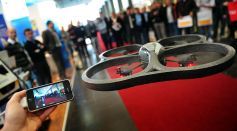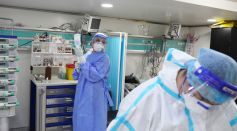TECH & INNOVATION
ExoMiner Deep Neural Network Finds 301 New Exoplanets Added to the Total Count of NASA's Kepler Mission

Woman Accidentally Swallows AirPods Instead of Painkiller in Another Unfortunate Event
Opioid Overdose Treatment: Wearable Device Works Like Insulin Shots to Inject Naloxone in a Timely Manner

Osteo-Pharma and Emultech Announce Joint Venture to Develop First-in-Class Disease-Modifying Treatment for Osteoarthritis

Turn Your Smartphone Camera Into a Biomechanics Lab Using an Innovative App

Learn Go Fast and Easy: The Essential Guide for Golang Developers

The Worlds Next Door: Looking For Habitable Planets Around Alpha Centauri
Holographic Images: This High-Resolution Camera Can Capture Hidden and Fast-Moving Objects

Urban Sequoias: Eco-Friendly Skyscrapers Can Capture 1,000 Tonnes of Carbon Equivalent Of 48,500 Trees

Solar-Powered HAPS Airbus Zephyr Test Flight Successful; 'Pseudo-Satellite' Expected to Provide Internet Connection in Remote Areas

Apple Awarded Two Patents for Their Unmanned Aerial Vehicles, Suggesting They Could Be Building a Drone

Individual Pessaries For More Successful Treatment Of Stress Incontinence Through 3D Printing

Innovative Startup Develops Unique Method to Remove Plastics From Our Oceans

Amrita Institute of Medical Sciences (AIMS) in Kochi, India, Becomes the First Hospital in the World to Carry Out Bilateral Upper Limb Transplant Using HEMO2life®
Most Popular

10 Weird Things the Human Body Does—and the Science Behind These Biological Mysteries

Why Mega Typhoons Keep Getting Stronger: The Science Behind Typhoon Formation and Extreme Weather

Top Space Technology Trends and Aerospace Innovations Revolutionizing the World Today

How Plate Tectonics Trigger Earth's Most Dangerous Disasters Through Powerful Seismic Hazards





